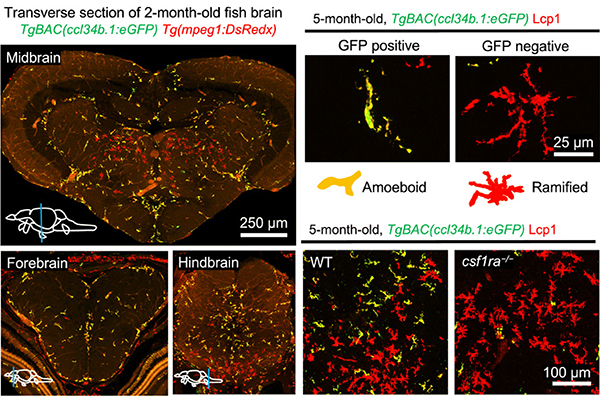Microglia, a type of neuronal support cells, function primarily as immune cells in the central nervous system (CNS). They mediate the immune response by acting as macrophages to clear cellular debris, dead neurons, and infectious agents from the nervous tissue through the process of phagocytosis (cell eating). When microglia are activated, they transform from a surveillance state to an effector state, where microglia serve multiple roles in both the innate (non-specific) and adaptive (specific) immune system. If these immune responses are improperly controlled, microglial activation can be a double-edged sword, bringing protective and damaging effects on the CNS.
On top of their primary function as scavengers, microglia also play other roles in neural development, glial (non-neuronal) cell regulation, and blood vessel formation. How microglia manage to coordinate between all these roles is not fully understood. However, the versatility of microglia is thought to be related to their heterogeneous populations; in other words, different subtypes of microglia exist in the CNS to serve distinct functions.
Recent studies have revealed that microglia heterogeneity exists in humans but not in mice, hamsters, sheep, marmosets, and macaques. Using zebrafish as an animal model, Prof. Zilong Wen and his research team identified two distinct microglial populations – the phagocytotic microglia and regulatory microglia. Their findings were published in the journal Science Advances on Nov 18, 2020.





